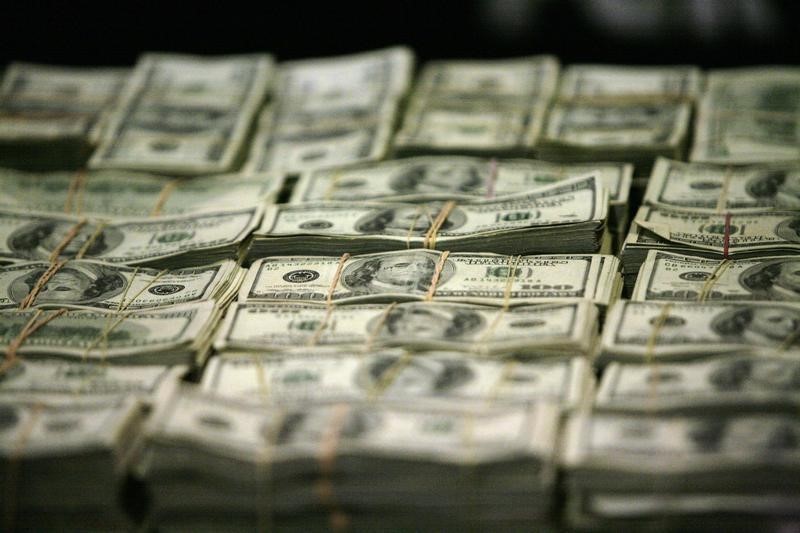Investing.com - The U.S. dollar continued to fall against other major currencies on Friday, pulling further away from a one-week high as news of additional personnel changes at the White House sparked fresh concerns over U.S. political turmoil.
The greenback weakened after the Washington Post reported on Thursday that U.S. President Donald Trump has decided to replace his national security adviser, H.R. McMaster.
Markets were already jittery following the President's decision on Tuesday to fire Secretary of State Rex Tillerson.
Adding to concerns over U.S. politics, fears of potential trade wars were reignited after Donald Trump announced plans this week to impose tariffs on up to $60 billion of Chinese imports, specifically targeting the technology and telecommunications sectors.
The U.S. dollar index, which measures the greenback’s strength against a trade-weighted basket of six major currencies, was down 0.13% at 90.02 by 06:10 a.m. ET (10:10 GMT), off a one-week high of 90.17 hit overnight.
The euro and the pound remained higher, with EUR/USD up 0.13% at 1.2320 and with GBP/USD rising 0.22% to 1.3967.
Earlier Friday, Eurostat reported that the euro zone consumer price index rose 1.1% in February from the same month a year earlier. Economists had expected annual inflation to rise by 1.2%.
The European Central Bank targets a headline inflation rate of close to, but just below 2%.
The yen and the Swiss franc were also stronger, with USD/JPY retreating 0.62% to 105.67 and with USD/CHF shedding 0.22% to trade at 0.9493.
Elsewhere, the Australian and New Zealand dollars were lower, with AUD/USD down 0.18% at 0.7785 and with NZD/USD sliding 0.38% to 0.7248.
Meanwhile, USD/CAD edged up 0.17% to trade at 1.3075.
